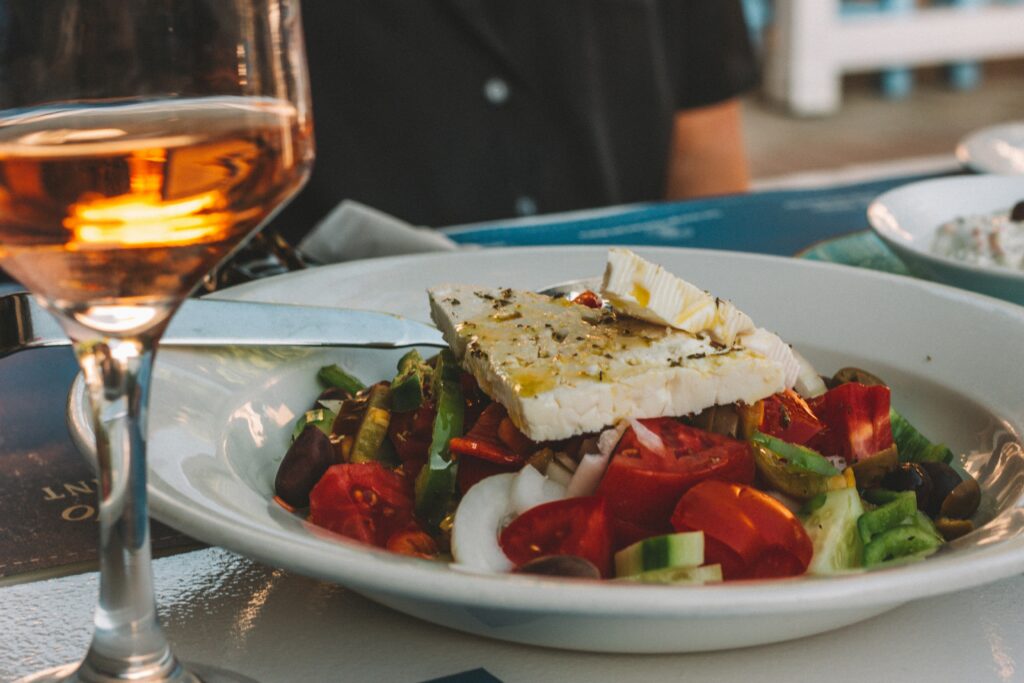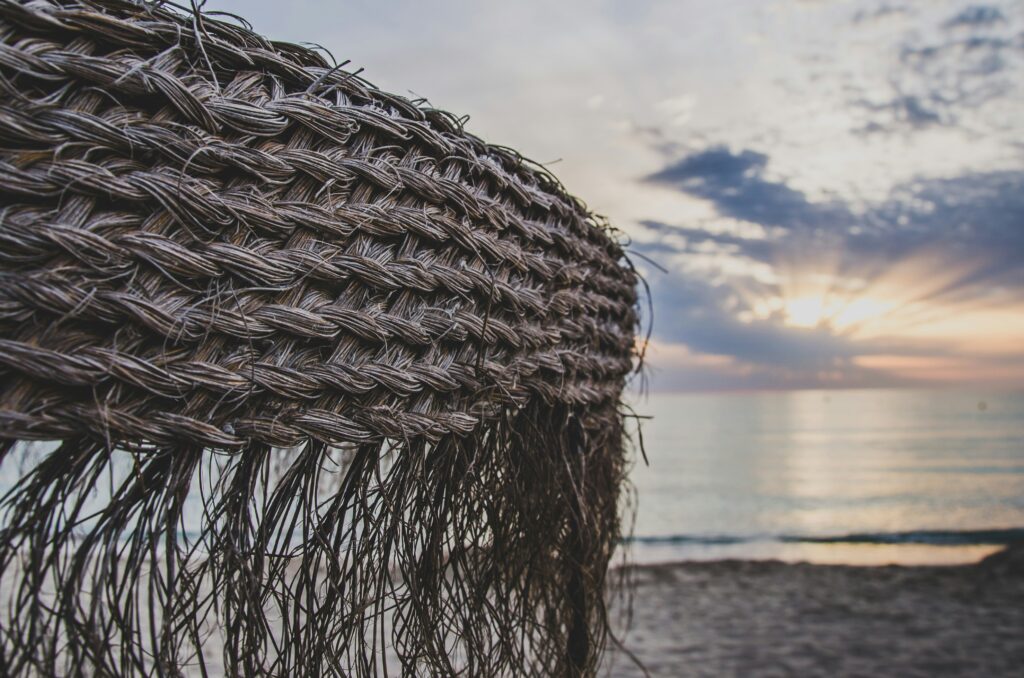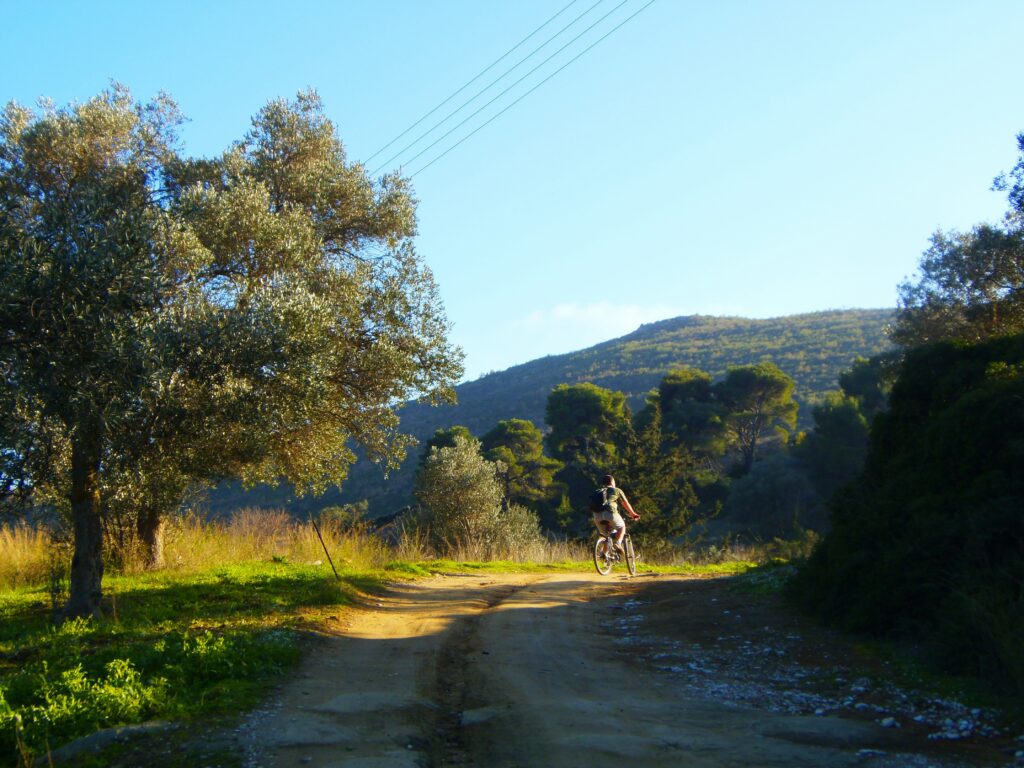There’s something profoundly liberating about waking up in a different bay each morning, about having no address except coordinates, about falling asleep to the gentle rock of water and waking to light reflecting off waves onto your cabin ceiling. Combining yoga with sailing in the Greek islands creates a retreat experience unlike any land-based program—one that’s simultaneously more adventurous and more meditative, more social and more introspective, more structured and more flexible than conventional formats.
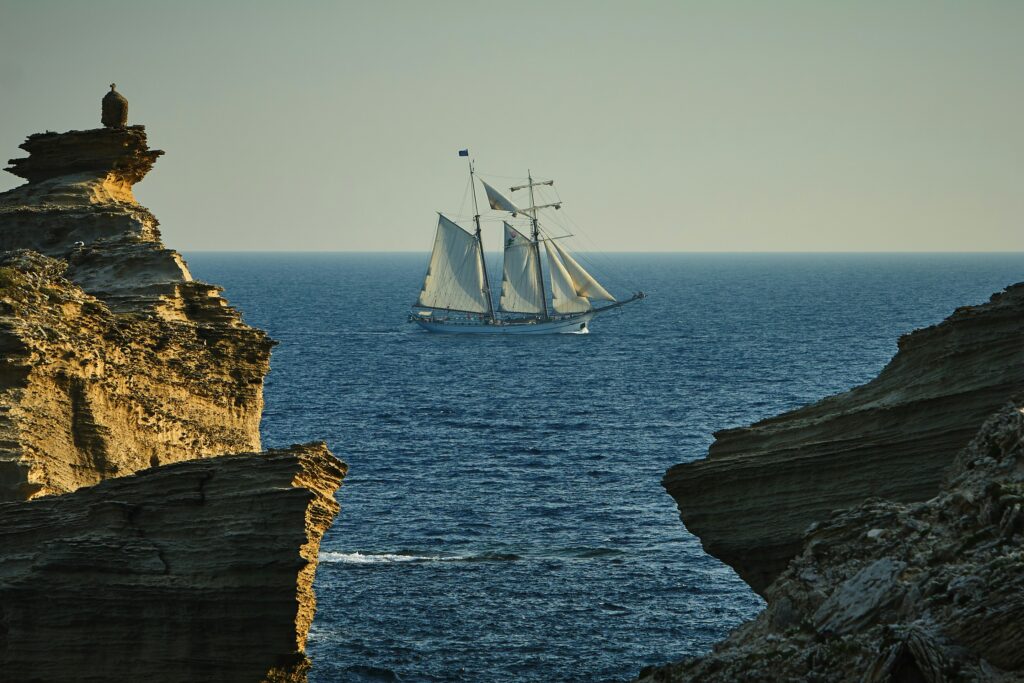
Greece’s island geography makes it perhaps the world’s ideal destination for sailing-based yoga retreats. The Aegean and Ionian seas contain over 6,000 islands and islets, most uninhabited, creating endless possibilities for exploration. Distances between islands are manageable—typically 10-30 nautical miles—allowing you to reach new destinations daily without exhausting passages. The Meltemi winds that blow through summer months provide reliable sailing conditions without being dangerously strong. And the water itself—impossibly clear, ranging from pale turquoise in sandy shallows to deep sapphire in channels—invites swimming at every anchorage.
Sailing yoga retreats attract a particular type of practitioner: those who find meditation in movement, who need adventure alongside introspection, who appreciate the community created by shared quarters and collaborative sailing, and who can embrace the surrender required when wind and weather ultimately determine schedules. These aren’t cruises where you’re a pampered passenger; you’re part of a small crew, participating in sailing tasks, making collective decisions about routes and anchorages, and learning that practice happens not just on the yoga mat but in every moment of responding skillfully to changing conditions.
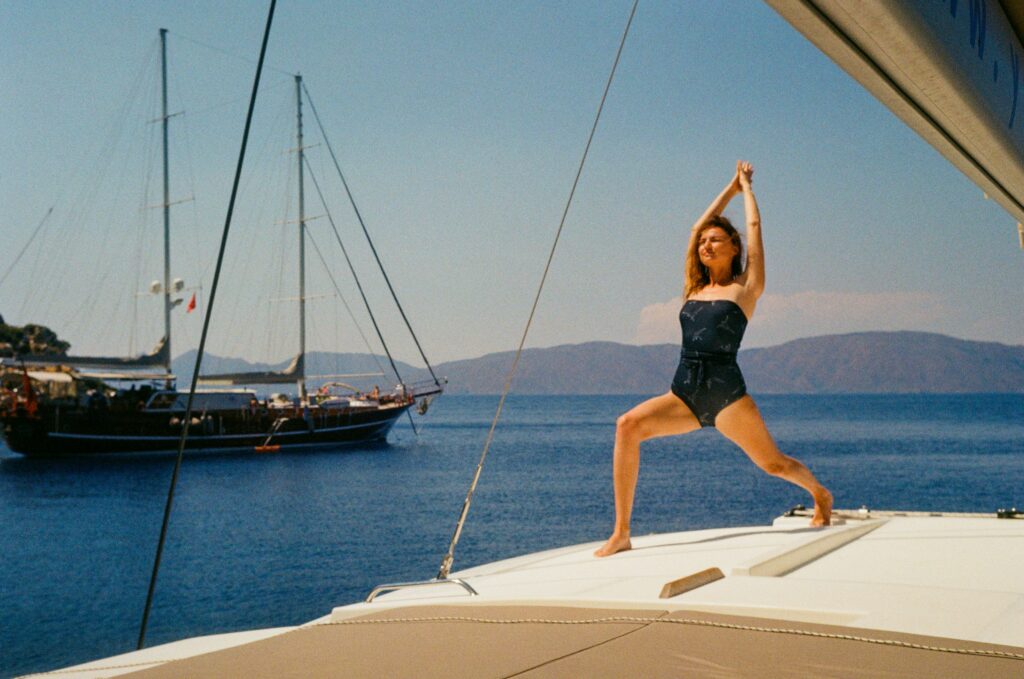
The Boat Life: Intimacy and Adventure
Most sailing yoga retreats in Greece operate on catamarans or monohull sailboats accommodating 6-12 guests plus crew (typically a skipper and yoga teacher, sometimes combined in one experienced person, sometimes a two-person team). Catamarans are increasingly popular for retreats—they’re more stable than monohulls, making them better for yoga practice underway, and their twin-hull design provides more living space and cabins with greater privacy.
Accommodations are compact but functional—small double or triple cabins with bunks, shared bathrooms, limited storage. This isn’t luxury in the conventional sense; it’s the stripped-down simplicity of boat living where every item must justify its space. You learn quickly to pack light, to make do with less, to appreciate efficiency and good design. The limitations become freeing—with only a few outfits, you stop thinking about appearance. With minimal belongings, you stop organizing and just exist.
The boat’s communal spaces—the cockpit for sailing and meals, the forward trampolines on catamarans for sunbathing and yoga, the deck areas for watching sunsets—create natural gathering points. Privacy requires retreating to your cabin, and even there you’re aware of others separated by thin walls. This enforced proximity could be claustrophobic, but small group sizes (carefully vetted during booking to ensure compatible temperaments) usually transform it into intimacy. Bonds form quickly when you’re sailing together, swimming together, preparing meals together, problem-solving when wind or weather requires route changes.
The rhythm of boat life becomes hypnotic. You wake naturally with the sun warming your cabin and the smell of coffee brewing in the galley. Morning yoga happens on deck—practicing sun salutations while actually watching the sun rise, tree pose tested by gentle rocking that demands real balance, savasana with the sound of water lapping against hulls. After practice and breakfast, you raise anchor and sail—maybe three hours, maybe six—to the next island or anchorage. You swim in crystal water, sometimes snorkeling over ancient ruins or vibrant marine life. Afternoon brings siesta, reading, or another swim. Late afternoon yoga might happen in a secluded bay or on a beach you’ve reached by dinghy. Dinner is eaten in the cockpit under stars, followed by conversation, silence, the occasional night swim in phosphorescent water.
Sailing Regions: Different Island Experiences
The Cyclades: This central Aegean island group offers the iconic Greek sailing experience—white-washed villages clinging to hillsides, windmills silhouetted against blue sky, dramatic rocky coastlines. Popular routes include Mykonos-Paros-Naxos-Ios-Santorini loops, or explorations of lesser-known islands like Sifnos, Serifos, and Kythnos. The Cyclades experience strong Meltemi winds in summer, creating excellent sailing conditions but challenging yoga practice on deck during afternoon hours. The islands are relatively close together, making daily island-hopping realistic. Anchorages range from organized marinas to completely isolated bays accessible only by boat.
The Saronic Gulf: These islands near Athens—Aegina, Poros, Hydra, Spetses—offer easier sailing with lighter winds and shorter distances, making them ideal for beginners or those who prefer gentle sailing with more time for yoga and exploration. The Saronic attracts families and more conservative travelers; villages are charming but perhaps less dramatically beautiful than the Cyclades. The advantage is reliability—weather is more predictable, harbors are well-equipped, and proximity to Athens allows shorter trip durations (3-4 days common) suitable for those with limited time.
The Dodecanese: This southeastern island chain near Turkey includes Rhodes, Kos, Symi, and many smaller islands. The sailing here offers cultural richness—these islands show strong Turkish influence in architecture and cuisine—alongside dramatic landscapes and excellent swimming. Winds are generally lighter than the Cyclades, making for comfortable sailing and easier deck yoga. Distances between some islands are greater, requiring occasional longer passages, but the diversity of landscapes from volcanic to limestone to lush valleys makes the sailing visually stunning.
The Ionian Islands: The western coast islands—Corfu, Paxos, Lefkada, Kefalonia, Zakynthos—offer dramatically different sailing than the Aegean. These islands are greener, with more vegetation and freshwater. The sailing is generally gentler with lighter, more variable winds. The Ionian attracts those who prefer lush landscapes over stark Cycladic aesthetics, who want reliable calm sailing, and who appreciate the slight Italian cultural influence from centuries of Venetian rule. Beach-based yoga is easier here with more sandy beaches, though the water, while beautiful, is slightly less clear than the Aegean.
The Yoga Practice: Adapting to Movement
Practicing yoga on a moving boat requires adaptations that ultimately deepen certain aspects of practice while limiting others. Balance poses become genuinely challenging when your platform is rocking—even gentle anchored swell creates instability that forces you to engage muscles and attention differently than on solid ground. Tree pose, warrior three, half-moon, and any one-legged balance becomes advanced practice, teaching you to find your center dynamically rather than statically.
Core engagement happens naturally—maintaining stability requires constant subtle core activation that traditional mat practice often fails to develop. Your body learns to anticipate and respond to movement without conscious thought, developing a kind of fluid intelligence that translates off the boat into better balance and coordination generally.
Inversions and complex arm balances are generally impractical on a rocking boat—most sailing yoga emphasizes standing poses, seated forward bends, gentle twists, and restorative postures. Pranayama practice becomes especially powerful surrounded by clean sea air, the rhythm of waves naturally guiding breath. Meditation on deck with only water and sky visible creates conditions for profound spaciousness and presence.
The limitations force creativity. Teachers adapt sequences to conditions—gentler practice on rough sailing days, more vigorous flows in calm anchorages, beach sessions when you land at sandy shores, and sometimes simply acknowledging that a particular day’s conditions don’t support formal practice. This flexibility itself becomes teaching—learning to honor what’s possible rather than forcing what isn’t, adapting to circumstances rather than demanding circumstances adapt to you.
Many sailing retreats incorporate stand-up paddleboard yoga for those wanting additional challenge and variety. Practicing on a SUP in a calm bay creates entirely new relationship with balance and core strength. Others integrate swimming as movement meditation—long, mindful swims in crystal water becoming a form of active contemplation.
The Sailing Element: Participation and Learning
The degree of actual sailing participation varies by retreat format and guest experience. Some programs operate more like crewed charters where the skipper handles all sailing while guests focus on yoga and relaxation. Others actively encourage everyone to participate in sailing tasks—helping raise and trim sails, taking turns at the helm, learning navigation basics, understanding how wind and weather determine routing decisions.
Full participation transforms the experience from transportation to practice. Learning to read wind on water, to feel how sail trim affects boat speed and balance, to navigate by landmarks and charts rather than GPS—these are embodied skills that demand present-moment awareness, much like yoga practice itself. The concentration required for helmsmanship, the subtle adjustments needed to keep the boat on course, the teamwork involved in tacking or anchoring—all become meditations on attention, cooperation, and responsiveness.
For many participants, sailing becomes as transformative as yoga practice. City dwellers accustomed to controlling environments through technology discover the humility required when wind determines schedules. Those used to individual achievement learn the satisfaction of collaborative accomplishment when the whole crew works together to navigate challenging passages or anchor in tight spaces. The sea teaches patience—you can’t hurry wind or weather, you can only work skillfully with what’s present.
Food and Provisioning
Meals on sailing retreats require more planning and flexibility than land-based programs. Storage is limited—refrigeration space is precious, fresh water must be conserved, cooking happens in compact galleys often while the boat is moving. Yet somehow, meals on good sailing retreats are memorable—perhaps because shared cooking becomes communal activity, because fresh fish just bought from fishermen tastes extraordinary, or because simple food eaten in spectacular anchorages satisfies in ways restaurant meals rarely match.
Most retreats provision before departure, loading boats with food for the entire journey plus wine, water, coffee, and staples. Fresh produce, bread, fish, and cheese are often purchased at island markets during the trip, turning provisioning stops into cultural experiences. Meals emphasize Greek staples that travel well and require minimal refrigeration—olive oil, tomatoes, cucumbers, peppers, onions, canned legumes, pasta, rice, dried herbs, feta that keeps without refrigeration, cured meats, nuts, and dried fruit.
Cooking happens cooperatively—someone chops vegetables, another cooks pasta, a third prepares salad, someone pours wine. The galley is too small for one person to work alone, so meal preparation becomes social activity. Simple dishes—spaghetti with olive oil and tomatoes, Greek salad with fresh bread, grilled fish with lemon, lentil soup, chickpea stew—taste better somehow when eaten in the cockpit watching sunset, when everyone’s hungry from sailing and swimming, when the meal represents collective effort.
Dietary restrictions are accommodated but require advance communication. Vegan and vegetarian are straightforward given Greek cuisine’s plant-based foundation. More complex restrictions become challenging given limited storage and shopping opportunities—those with serious food allergies or multiple restrictions should carefully assess whether boat-based retreat is practical.
Swimming and Snorkeling: Daily Immersion
One of sailing retreat’s greatest gifts is access to swimming spots unreachable from land—remote bays, tiny islets, locations where you’re the only humans for miles. The water in these spots is often startlingly clear, colored in shades that seem impossible until you see them—pale turquoise over sand, emerald green where seagrass grows, deep blue in channels, and near-violet in volcanic areas.
Swimming becomes a daily practice, often multiple times daily. Morning swims off the boat to wake up, afternoon snorkeling over underwater sites, sunset swims in golden light, occasional night swims in water glowing with bioluminescence. The salt water, rich in minerals, feels therapeutic—skin becomes softer, minor aches ease, sleep deepens. Many participants report feeling physically different after a week of daily sea swimming, as if the water itself has healing properties.
Snorkeling reveals underwater worlds—rocky reefs covered in sea urchins and octopuses, seagrass meadows where fish school, and sometimes archaeological sites with ancient pottery shards or ruins visible through the water. Some sailing routes deliberately include locations with significant underwater interest—submerged Minoan ports, Roman fish farms, Venetian fortifications now habitat for marine life.
For those less confident in water, the boat provides safe, gradual exposure. You can swim with the boat anchored nearby, practice in calm bays before venturing into more open water, and build confidence with supportive community. By week’s end, even initially nervous swimmers often find themselves jumping off the boat into deep water, having discovered comfort and even joy in the sea.
Weather and the Art of Surrender
Perhaps the most valuable lesson sailing yoga retreats teach is surrender. Despite careful itinerary planning, weather ultimately determines routes. Wind too strong or from wrong direction makes planned anchorage impossible—you go elsewhere. Rare but possible storms require staying put when you intended to sail. Equipment issues occasionally force route changes. This unpredictability frustrates people accustomed to controlling schedules and meeting expectations, but eventually most participants discover freedom in surrender.
You can’t argue with weather. You can’t negotiate with wind. You can only respond skillfully to what is. This is yoga philosophy made concrete—accepting reality rather than fighting it, finding peace within circumstances you can’t control, trusting that the journey matters more than checking destinations off lists. The boat trip that goes completely according to plan is probably less transformative than the one that requires flexibility, adaptation, and letting go of attachment to outcomes.
Good sailing yoga retreat leaders navigate this balance skillfully—maintaining enough structure that guests feel safe and cared for while embracing enough flexibility that the group can respond authentically to conditions. They communicate clearly about options and constraints, involve participants in decision-making when appropriate, and model the equanimity that comes from years of living with weather’s fickleness.
Group Dynamics and Community
Small boats create unique social dynamics. You can’t really escape each other—there’s nowhere to go for privacy except your cabin, and even there you hear others moving about. This could be nightmarish with incompatible personalities, which is why good retreat operators carefully screen participants and maintain small group sizes (6-8 guests is ideal; 12 is maximum).
When the group gels, the intimacy creates profound connections. You share everything—space, meals, sailing tasks, morning breath, sunscreen application on hard-to-reach spots, vulnerability when someone gets seasick or scared. You see each other first thing in morning without makeup or pretense, and last thing at night when defenses have melted away. Bonds formed in these conditions often endure long after the retreat ends.
The enforced proximity also requires interpersonal skills that many of us have lost in the age of curated relationships. You can’t ghost someone you’re living with on a boat. If tensions arise, you navigate them directly. If someone annoys you, you find compassion rather than avoidance. The boat becomes laboratory for practicing patience, communication, kindness, and the recognition that community requires both asserting needs and accommodating others.
Evening gatherings in the cockpit—sharing meals, telling stories, laughing, falling silent under stars—become treasured memories. The quality of conversation differs from land-based retreats; perhaps the vastness of sea and sky invites larger questions, or perhaps the shared adventure creates trust that enables vulnerability. Whatever the mechanism, these boat conversations often go deeper faster than connections formed in more conventional settings.
Best Time for Sailing Yoga Retreats
May and June: These months offer excellent sailing—reliable but not overwhelming wind, pleasant temperatures (22-28°C), and water warm enough for comfortable swimming (20-23°C by June). Islands haven’t yet filled with summer tourists, harbors and anchorages are less crowded, and there’s a sense of the season opening up. Early season can bring occasional unsettled weather requiring flexibility, but mostly offers ideal conditions. This is prime time for sailing retreats.
July and August: Peak summer brings strongest Meltemi winds, which create excellent sailing but can make some passages challenging and deck yoga difficult during afternoon hours. Water is warmest (24-27°C), days are longest, and islands are most lively with summer energy. Harbors and popular anchorages can be crowded, requiring early arrival or accepting less desirable anchoring spots. Some people love high summer’s vibrant atmosphere; others find it overwhelming. For sailing specifically, the strong reliable winds are actually ideal if you’re comfortable with more vigorous conditions.
September and early October: Many consider this the sweet spot—winds moderate from summer intensity, seas retain warmth (22-25°C), crowds disappear after August, and the light achieves golden autumn quality. Sailing is generally comfortable, swimming remains delightful, and islands feel more authentic as tourism winds down. This is excellent time for combining ease of sailing with quality of island experience.
October through April: Sailing retreats are rare outside April-October due to weather unpredictability, cooler temperatures, and reduced services on islands. Some experienced operators run spring and autumn shoulder-season trips for adventurous participants willing to embrace variable weather and occasional challenges.
Practical Considerations and Costs
Sailing yoga retreats typically run one week (7-8 days), though some operators offer shorter 4-5 day formats and occasional longer expeditions. Costs range from €1,200 to €2,500 per person depending on boat quality, season, group size, and inclusions. This usually covers accommodation on the boat, all meals (sometimes excluding some restaurant meals ashore), daily yoga instruction, skipper fees, and fuel/marina fees. Excluded are typically flights, alcohol beyond included wine at dinner, optional activities ashore, and personal expenses.
The pricing reflects the all-inclusive nature—you’re essentially living on the boat without additional accommodation or meal costs. Compared to combining island hotel rates with ferry costs, sailing retreats can represent reasonable value. Compared to other yoga retreat formats, they’re generally more expensive but include the sailing experience, greater adventure, and access to locations unreachable otherwise.
Physical requirements are moderate—you should be comfortable swimming, able to move around a rocking boat safely, and capable of occasional physical effort (helping raise sails, climbing on and off the boat via ladder). Serious mobility limitations or fear of water make sailing retreats impractical. Seasickness affects some participants, especially early in the trip; good operators carry medication and know techniques for managing it, and most people adapt within a day or two.
Is a Sailing Yoga Retreat Right for You?
Sailing yoga retreats are ideal for adventurous practitioners who find meditation in movement, who appreciate that the journey matters more than the destination, who enjoy water and swimming, and who can embrace unpredictability and close quarters with strangers. They suit those who want active engagement rather than passive pampering, who value experience over luxury, and who find community energizing rather than draining.
This format particularly appeals to solo travelers seeking adventure with built-in community, to couples wanting shared challenges and natural bonding experiences, and to anyone who’s done multiple land-based retreats and wants something different. It works well for experienced yoga practitioners who don’t need intensive instruction and for strong swimmers comfortable in open water.
Sailing retreats are less ideal for those preferring predictability and control, anyone uncomfortable with close quarters and limited privacy, people who need extensive alone time to recharge, or those with significant dietary restrictions or medications requiring refrigeration. They’re also challenging for anyone prone to serious seasickness or anxiety around water.
But for those it calls—and you’ll know if this is you—a sailing yoga retreat in Greece offers something that land-based programs simply can’t match. The freedom of waking in a new bay each morning, the meditation of watching islands appear and disappear on the horizon, the profound simplicity of life reduced to wind, water, sun, companionship, and practice. The way sailing teaches surrender while yoga teaches presence, how the two practices complement and deepen each other. And the discovery that home isn’t a location but a feeling—of being exactly where you need to be, moving with rather than against the currents that carry us all.
More about Yoga and Wellness in Greece
Yoga and Food Retreats in Greece: The Healing Power of the Mediterranean Diet
Food in Greece is never just fuel—it’s culture, connection, celebration, and at its best, a…
Yoga and Detox Retreats in Greece: Reset Under the Sun
The concept of purification through fasting and cleansing is hardly new to Greece. Ancient Greeks…
Yoga and Sailing Retreats in Greece: Freedom on the Aegean Sea
There’s something profoundly liberating about waking up in a different bay each morning, about having…
The Light of Greece: A Meditation on Simplicity
There’s something about the light in Greece that’s impossible to photograph, difficult to describe, but…
Eco Yoga Retreats in Greece: Between Olive Trees and Blue Horizons
There’s an inherent alignment between yoga philosophy and ecological consciousness—both invite us to recognize our…
Yoga Retreats Near Athens: Balance Beyond the City
Athens doesn’t immediately conjure images of wellness retreats. The Greek capital is known for its…

